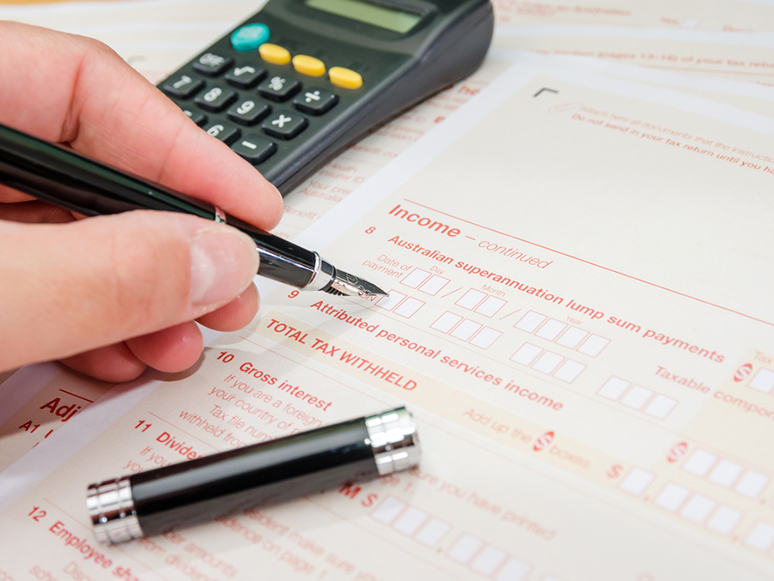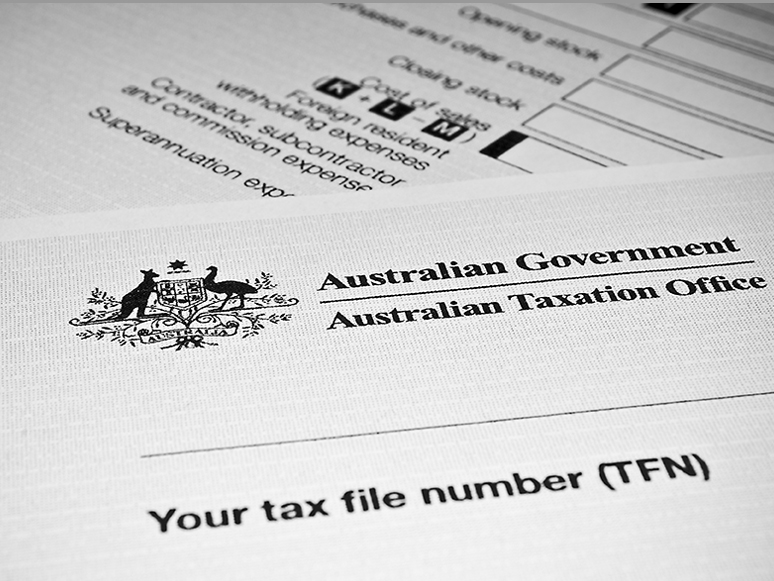logo


23rd Sep, 2023

The ATO has given the green light for taxpayers with uncomplicated financial affairs to lodge their returns. It says that the information it collects from employers, banks, private health insurers, share registries and other institutions has now been pre-filled and is ready to go on either myTax (accessed through myGov) if you’re lodging your own return, or through tax portals of registered agents, if you’re using those services.
The ATO notes that income such as amounts from rental properties, government payments, capital gains from the sale of investments, or other income from “side hustles” – in particular sharing economy platforms and any cash received for work performed – can’t be pre-filled, so will need to be manually entered. There are multiple current ATO data-matching programs running, for example in the areas of residential property and ride-sourcing, so it’s important to get your income reporting right the first time this year.
You should also be aware of some changes this year which may negatively affect the amount of refund you receive, and in some cases may result in tax amounts payable. These include the cessation of the low and middle income tax offset (LMITO), and the replacement of the “shortcut” method for calculating working from home (WFH) with the revised fix rate method, which allows claiming 67 cents per hour instead of 80 cents for each hour you work from home.
Due to these and other changes, the ATO reminds that the initial tax estimate you receive from myTax or your registered tax agent may not match the final tax outcome. It’s best to wait for your finalised notice of assessment before making any plans for spending an anticipated tax refund.
19th May, 2023

In the Budget, the Government did not announce any personal tax rates changes. The Stage 3 tax changes commence from 1 July 2024, as previously legislated.
The 2023–2024 tax rates and income thresholds for residents (unchanged since 2021–2022) are:
Stage 3: from 2024–2025
The Budget did not announce any changes to the Stage 3 personal income tax changes, which are set to commence from 1 July 2024, as previously legislated. From 1 July 2024, the 32.5% marginal tax rate will be cut to 30% for one big tax bracket between $45,000 and $200,000. This will more closely align the middle tax bracket of the personal income tax system with corporate tax rates. The 37% tax bracket will be entirely abolished at this time.
Therefore, from 1 July 2024, there will only be three personal income tax rates: 19%, 30% and 45%. From 1 July 2024, taxpayers earning between $45,000 and $200,000 will face a marginal tax rate of 30%. With these changes, around 94% of Australian taxpayers are projected to face a marginal tax rate of 30% or less.
Low and middle income tax offset (not extended)
The 2023–2024 Budget did not announce any extension of the low and middle income tax offset (LMITO) beyond the 2021–2022 income year. The LMITO has now ceased and been fully replaced by the low income tax offset (LITO).
With no extension of the LMITO announced in this Budget, 2021–2022 was the last income year for which that offset was available.
As a result, low-to-middle income earners may see their tax refunds from July 2023 reduced by between $675 and $1,500 (for incomes up to $90,000 but phasing out up to $126,000), all other things being equal.
Low income tax offset (unchanged)
While the LMITO has now ceased, low and middle income taxpayers remain entitled to the low income tax offset (LITO). No changes were made to the LITO in the 2023–2024 Budget, and so it will continue to apply for the 2023–2024 income year and beyond.
The LITO was intended to replace the former low income and low and middle income tax offsets from 2022–2023, but the new LITO was brought forward in the 2020 Budget to apply from the 2020–2021 income year.
The maximum amount of the LITO is $700. The LITO is withdrawn at a rate of 5 cents per dollar between taxable incomes of $37,500 and $45,000 and then at a rate of 1.5 cents per dollar between taxable incomes of $45,000 and $66,667.
For the 2022–2023 income year, the Medicare levy low-income threshold for singles will be increased to $24,276 (up from $23,365 for 2021–2022). For couples with no children, the family income threshold will be increased to $40,939 (up from $39,402 for 2021– 2022). The additional amount of threshold for each dependent child or student will be increased to $3,760 (up from $3,619).
For single seniors and pensioners eligible for the seniors and pensioners tax offset (SAPTO), the Medicare levy low-income threshold will be increased to $38,365 (up from $36,925 for 2021–2022). The family threshold for seniors and pensioners will be increased to $53,406 (up from $51,401), plus $3,760 for each dependent child or student.
The Government will exempt eligible lump sum payments in arrears from the Medicare levy from 1 July 2024. This measure seeks to ensure low-income taxpayers don’t pay higher amounts of the Medicare levy as a result of receiving an eligible lump sum payment, for example as compensation for underpaid wages.
Eligibility requirements will ensure this relief is targeted to taxpayers who are genuinely on low incomes and should be eligible for a reduced Medicare levy. To qualify, taxpayers must be eligible for a reduction in the Medicare levy in the two most recent years to which the lump sum accrues. They must also satisfy the existing eligibility requirements of the existing lump sum payment in arrears tax offset, including that a lump sum accounts for at least 10% of the taxpayer’s income in the year of receipt.
The Government will forgo $5.4 million in receipts over five years from 2022–2023 (and $15.5 million over two years to 2033–2024) to support students affected by a delay in the transfer of some historical tertiary education loan records to the ATO. This will mean waiving the following debts for affected loans, as determined at the date of transfer to the ATO:
There has been much interest in the Government’s plan to address rising energy prices, so although it’s not directly linked to taxation, here is a brief outline.
The Government will provide $1.5 billion over five years from 2022–2023 (and $2.7 million per year ongoing) to reduce the impact of rising energy prices on Australian households and businesses by providing targeted energy bill relief and progressing gas market reforms.
Funding includes:
The Government will also provide funding to support the NSW and Queensland governments to implement a cap of $125 per tonne on the price of coal used for electricity generation.
31st Mar, 2022

In the Budget, the Government did not announce any personal tax rates changes. The Stage 3 tax changes commence from 1 July 2024, as previously legislated.
The 2022–2023 tax rates and income thresholds for residents are unchanged from 2021–2022:
Stage 3: from 2024–2025
The Stage 3 tax changes will commence from 1 July 2024, as previously legislated. From 1 July 2024, the 32.5% marginal tax rate will be cut to 30% for one big tax bracket between $45,000 and $200,000. This will more closely align the middle tax bracket of the personal income tax system with corporate tax rates. The 37% tax bracket will be entirely abolished at this time.
Therefore, from 1 July 2024, there will only be three personal income tax rates: 19%, 30% and 45%. From 1 July 2024, taxpayers earning between $45,000 and $200,000 will face a marginal tax rate of 30%. With these changes, around 94% of Australian taxpayers are projected to face a marginal tax rate of 30% or less.
The low and middle income tax offset (LMITO) will be increased by $420 for the 2021–2022 income year so that eligible individuals will receive a maximum LMITO benefit up to $1,500 for 2021–2022 (up from the current maximum of $1,080).
This one-off $420 cost of living tax offset will only apply to the 2021–2022 income year. Importantly, the Government did not announce an extension of the LMITO to 2022–2023. So it remains legislated to only apply until the end of the 2021–2022 income year (albeit up to $1,500 instead of $1,080).
The Government said the LMITO for 2021–2022 will be paid from 1 July 2022 to more than 10 million individuals when they submit their tax returns for the 2021–2022 income year. Other than those who do not require the full offset to reduce their tax liability to zero, all LMITO recipients will benefit from the full $420 increase. That is, the proposed one-off $420 cost of living tax offset will increase the maximum LMITO benefit in 2021–2022 to $1,500 for individuals earning between $48,001 and $90,000 (but phasing out up to $126,000). Those earning up to $48,000 will also receive the $420 one-off tax offset on top of their existing $255 LMITO benefit (phasing up for incomes between $37,001 and $48,000).
All other features of the current LMITO remain unchanged (including that it will only apply until the end of the 2021–2022 income year). Consistent with the current LMITO, taxpayers with incomes of $126,000 or more will not receive the additional $420.
As already noted, the Government has proposed that eligible taxpayers with income up to $126,000 will receive the additional one-off $420 cost of living tax offset for 2021–2022 on top of their existing LMITO benefit.
Currently, the amount of the LMITO for 2021–2022 is $255 for taxpayers with a taxable income of $37,000 or less. Between $37,000 and $48,000, the value of LMITO increases at a rate of 7.5 cents per dollar to the maximum amount of $1,080. Taxpayers with taxable incomes from $48,000 to $90,000 are eligible for the maximum LMITO of $1,080. From $90,001 to $126,000, LMITO phases out at a rate of 3 cents per dollar.
Low income tax offset (unchanged)
The low income tax offset (LITO) will also continue to apply for the 2021–2022 and 2022–2023 income years. The LITO was intended to replace the former low income and low and middle income tax offsets from 2022–2023, but the new LITO was brought forward in the 2020 Budget to apply from the 2020– 2021 income year.
The maximum amount of the LITO is $700. The LITO will be withdrawn at a rate of 5 cents per dollar between taxable incomes of $37,500 and $45,000 and then at a rate of 1.5 cents per dollar between taxable incomes of $45,000 and $66,667.
For the 2021–2022 income year, the Medicare levy low-income threshold for singles will be increased to $23,365 (up from $23,226 for 2020–2021). For couples with no children, the family income threshold will be increased to $39,402 (up from $39,167 for 2020– 2021). The additional amount of threshold for each dependent child or student will be increased to $3,619 (up from $3,597).
For single seniors and pensioners eligible for the SAPTO, the Medicare levy low-income threshold will be increased to $36,925 (up from $36,705 for 2020– 2021). The family threshold for seniors and pensioners will be increased to $51,401 (up from $51,094), plus $3,619 for each dependent child or student.
Legislation is required to amend these thresholds, and a Bill will be introduced shortly.
The Budget papers confirm that the costs of taking COVID-19 tests – including polymerase chain reaction (PCR) tests and rapid antigen tests (RATs) – to attend a place of work are tax deductible for individuals from 1 July 2021. In making these costs tax deductible, the Government will also ensure FBT will not be incurred by businesses where COVID-19 tests are provided to employees for this purpose.
This measure was previously announced 8 February 2022.
The Government will reduce the excise and excise- equivalent customs duty rate that applies to petrol and diesel by 50% for six months. The excise and excise- equivalent customs duty rates for all other fuel and petroleum-based products, except aviation fuels, will also be reduced by 50% for six months.
The Treasurer said this measure will see excise on petrol and diesel cut from 44.2 cents per litre to 22.1 cents. Mr Frydenberg said a family with two cars who fill up once a week could save around $30 a week, or around $700 over the next six months. The Treasurer made a point of emphasising that the Australian Competition and Consumer Commission (ACCC) will monitor the price behaviour of retailers to ensure that the lower excise rate is fully passed on.
The measure will commence from 12.01 am on 30 March 2022 and will remain in place for six months, ending at 11.59 pm on 28 September 2022.